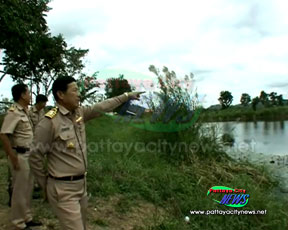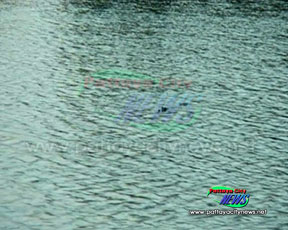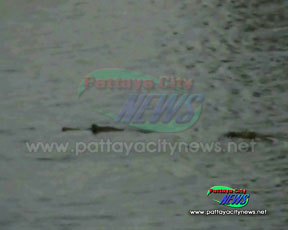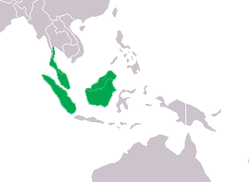
November 23, 2007
Some unique crocs have been seen in Thailand. But as opposed to merely “out-of-place” or escaped reptiles, it might signal a recovery of a locally “extinct” species.

Loosely using the term “gavial,” some form of a gavial or gharial is the source of this attention. Either it is the true gharial, Gavialis gangeticus, identified as such by the local Thai media, or the false gharial Tomistoma schlegelii, the preferred choice, I read after I first saw this news item, of cryptozoologist Chad Arment. Since I respect Arment’s opinion on this, as he knows his herps rather well, his insights over the local reporter’s seems the correct call here.

The Pattaya City News noted more than one of the “rare freshwater gavials” were seen swimming in a lake in the Sattahip district on Tuesday, November 20, 2007.
These photos are the best of the lot that accompanied the article, “Not Quite the Loch Ness Monster: Rare Crocodile Found in Sattahip Lake.”

The Thai false gharial is also known as Takong or Tomistoma, but it is said to be extinct in that country. There have been no records of Tomistoma in Thailand since 1970 and it is probably extirpated there (Ratanakorn et al. 1994). Reports of the species in Sulawesi and Vietnam (Groombridge 1982) remain unsupported. These unconfirmed sightings from Marisa river, north Sulawesi, and Ca Mau, Minh Hai Province, Vietnam, would be significant range extensions if verified. The new reports out of Sattahip, Thailand, likewise, are important news.

The false gharial (map above) is native to the area, although they have not been encountered in Thailand since 1970, as noted. The true gharial (map below) is generally known from India and Pakistan. These two maps for the two species indicate the accepted ranges.

References:
Groombridge, B. 1982.
The IUCN Amphibia-Reptilia Red Data Book IUCN. Gland, Switzerland. 426pp.
Ratanakorn, P., B. Amget and B. Otley. 1994.
Preliminary Surveys of Crocodiles in Thailand. In: Crocodiles, Proceedings of the 12th Working Meeting of the Crocodile Specialist Group. 1:35 ~ 49. IUCN, Gland, Switzerland.
About Loren Coleman
Loren Coleman is one of the world’s leading cryptozoologists, some say “the” leading living cryptozoologist. Certainly, he is acknowledged as the current living American researcher and writer who has most popularized cryptozoology in the late 20th and early 21st centuries.
Starting his fieldwork and investigations in 1960, after traveling and trekking extensively in pursuit of cryptozoological mysteries, Coleman began writing to share his experiences in 1969. An honorary member of Ivan T. Sanderson’s Society for the Investigation of the Unexplained in the 1970s, Coleman has been bestowed with similar honorary memberships of the North Idaho College Cryptozoology Club in 1983, and in subsequent years, that of the British Columbia Scientific Cryptozoology Club, CryptoSafari International, and other international organizations. He was also a Life Member and Benefactor of the International Society of Cryptozoology (now-defunct).
Loren Coleman’s daily blog, as a member of the Cryptomundo Team, served as an ongoing avenue of communication for the ever-growing body of cryptozoo news from 2005 through 2013. He returned as an infrequent contributor beginning Halloween week of 2015.
Coleman is the founder in 2003, and current director of the International Cryptozoology Museum in Portland, Maine.
Filed under Breaking News, Cryptotourism, CryptoZoo News, Cryptozoologists, Cryptozoology, Evidence, Extinct, Eyewitness Accounts, New Species, Out of Place, Photos